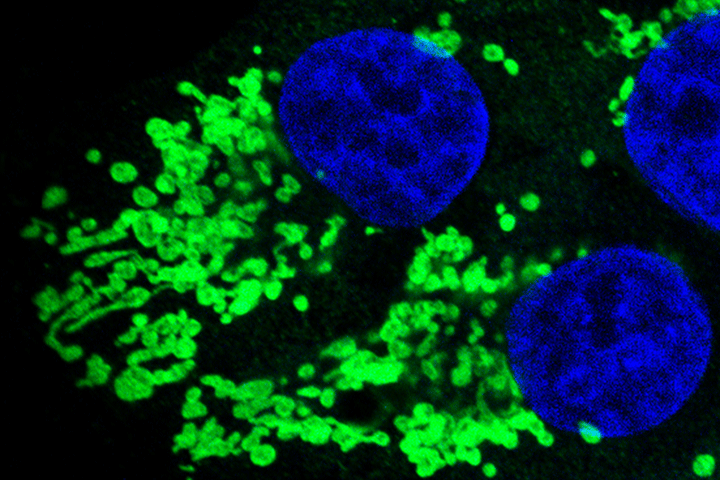AACR Annual Meeting 2021 Highlights

Cancer comprises about 100 different disease types, each of which has its own complexities in terms of biology and treatment.
Scientists across the world are working diligently to unravel the molecular mechanisms that make these cancers grow, divide, and spread in order to help develop better treatments that can extend life and potentially even cure some of these diseases. Their efforts were on full display during American Academy of Cancer Research (AACR) Annual Meeting 2021.
Pancreatic cancer, as we know, is one of the toughest diseases to treat. But it is clear that science is making headway in turning one of the most lethal of malignancies potentially into one that is much more effectively treated. Let’s Win and the Lustgarten Foundation are bringing you some brief highlights from the AACR meeting. Let’s Win will be covering some of these topics in greater detail in the coming months.
Earlier Detection Remains the Holy Grail
A big factor in pancreatic cancer treatment is that the disease is often diagnosed once it has spread beyond the reach of surgery. Earlier detection would make more patients eligible for surgical intervention, which remains the only potentially curative treatment. Gloria M. Petersen, Ph.D., of the Mayo Clinic (Rochester, Minnesota) opened a session dedicated to earlier detection of pancreatic cancer by reviewing the current state of research and open challenges. Petersen, a professor of epidemiology, noted there remains a need for better biomarkers to detect pancreatic cancer earlier. Yet investigators are faced with challenges in developing and validating these biomarkers which, in some cases, is due to the lack of high-risk cohorts for easier clinical validation. Part of the issue is that only up to about 10 percent of pancreatic cancer patients carry germline mutations (mutations you are born with), and many germline carriers have no family history of pancreatic cancer.
Scientists are looking at other potential markers such as recent onset diabetes, which is emerging as an interesting at-risk group. According to current research, about 20-25 percent of pancreatic cancer patients received a diagnosis of diabetes three to 36 months prior to their diagnosis of pancreatic cancer. The National Cancer Institute is developing a large, new-onset diabetes cohort for study and is also developing a registry of pancreatic cancer case-control samples through the Pancreatic Cancer Detection Consortium (PCDC).
Some investigators, like Brian Wolpin, M.D., M.P.H., of the Dana-Farber Cancer Institute (Boston, Massachusetts) are looking at how altered metabolism plays a role in the early detection of pancreatic cancer. Among their findings of potential clues are elevation in branched-chain amino acids in circulation and an unexpected loss in muscle and fat tissue. This is seen in both mouse models of pancreatic cancer and in clinical data and scans from the Dana-Farber system in which doctors can see a steady decline in skeletal muscle area up to five years prior to a pancreatic cancer diagnosis. Fat loss occurs at about six months prior to diagnosis. The researchers are now working to see if these imaging and circulating markers can be implemented to predict pancreatic cancer risk.
Nickolas Papadopoulos, Ph.D., of the Johns Hopkins School of Medicine (Baltimore, Maryland) developed CancerSEEK, a blood test for the early detection of multiple cancers. He spoke about the development of technology that went into CancerSEEK, and how combining protein biomarkers and technology to detect circulating tumor DNA allowed them to generate a high specificity test. Different features are needed for a screening test versus a diagnostic test. For example, screening test specificity is paramount, while diagnostic tests must have high sensitivity.
In the Stand Up To Cancer Open Scientific Session, Wolpin spoke again, focusing on pancreatic cancer risk models. For example, researchers have found that early-stage pancreatic cancer tumors may cause symptoms of other diseases that can then be used as risk factors to enrich screening and identification efforts. Among those other diseases investigators are looking at as risk causation factors are hyperglycemia and diabetes. He also spoke about the Nurses’ Health Study and Health Professionals Follow-Up Study, which included 160,000 participants; 1,200 developed pancreatic cancer during the study. Analysis showed that unintentional weight loss along with a recent diabetes diagnosis can increase pancreatic cancer risk seven-fold, which is similar to the risk people with inherited (germline) mutations face. Changes in medications can also be used to predict who will develop pancreatic cancer in this cohort. For example, starting insulin or increasing antidiabetic drugs, starting anticoagulant therapy, or stopping antihypertensive therapy all predict increased risk for developing pancreatic cancer. These factors can be used in algorithms that would then help doctors flag individuals at different levels of risk.
Inroads in Molecularly Targeted Imaging
Julie Sutcliffe, Ph.D., of the University of California, Davis, gave an update on molecularly targeted imaging and treatment of pancreatic cancer via integrin alphavbeta6. Alphavbeta6 is undetectable in normal pancreas tissues, but is high in a number of cancers, including pancreatic cancer. It plays a role in invasion and metastasis and is associated with a poor prognosis, making it an important imaging and therapeutic target. The first-in-human clinical imaging study is almost complete. The study includes 26 patients, 10 of whom have pancreatic cancer. The participants were injected and imaged at multiple time points, and all participants tolerated the procedure well. Results show this approach can detect tumors less than 1 cm. It appears that in breast cancer recurrence alphavbeta6 is more sensitive at detecting metastases and lymph nodes than PET scanning alone.
Another study recently launched which includes combining imaging with peptide receptor radionuclide therapy. This is a dose-escalation study, which recently enrolled its first three patients, all of whom passed imaging screening and are scheduled for treatment.
Cancer Prevention and Detection: Moving from Discovery to Action
Researchers are looking at DNA released by tumor cells into the blood to assist in early cancer detection. DNA methylation is a DNA modification involved in gene expression and can be used to determine which cell type the DNA came from. Several studies have shown that abnormal DNA methylation may be an indicator of the presence of cancer. The following studies are looking at abnormal DNA methylation.
Hatim T. Allawi, Ph.D., M.B.A., vice president of research and technology development at Exact Sciences, discussed a multi-cancer early detection test that relies on detection of abnormal DNA methylation in cell-free DNA and examines the presence of known cancer-associated proteins. In a study undertaken by Allawi and colleagues, the researchers found this approach correctly identified 86 percent of the 257 study participants without cancer and 95 percent of the 180 patients with cancer, representing six different cancer types, including pancreatic, lung, esophageal, stomach, liver, and ovarian cancers. The sensitivity of the test was 90 percent for ovarian and pancreatic cancers. The group is currently developing a large clinical trial, and looking at the potential of combining their technology with the technology in CancerSEEK to further improve the test.
Gregory Alexander, Ph.D., senior director of biostatistics at GRAIL, presented data from their cfDNA-based targeted methylation multi-cancer early detection test for population-scale screening. According to study results, the test had 100 percent specificity, meaning that no false positives were found. Furthermore, the test correctly identified the site of cancer origin for all 50 cancer types tested. The study also showed that substances like hemoglobin, triglycerides, and other substances did not affect cancer detection or the identification of tumor origin.
Insight into Long-Term Survivors
Marta Luksza, Ph.D., of the Tisch Cancer Institute of Icahn School of Medicine at Mount Sinai (New York), who collaborates with Vinod Balachandran, M.D., of Memorial Sloan Kettering Cancer Center (New York), presented data on pancreatic cancer long-term survivors. According to their work, pancreatic cancer long-term survivors cannot be discerned by treatment, subtype, or mutations. Rather, a new study shows that high-quality neoantigens are immunoedited in long-term survivors of pancreatic cancer. These long-term survivors have a more immunogenic primary tumor, a longer time to recurrence, and a less immunogenic recurrent tumor.
The tumor microbiome of pancreatic cancer long-term survivors was presented by Florencia McAllister, M.D., of the MD Anderson Cancer Center (Houston, Texas). Gut microbiome signatures are beginning to be identified in pancreatic cancer patients and differences in the microbiomes of long-term pancreatic cancer survivors are being correlated with greater immune activation. Researchers are finding the tumor microbiome can be modulated, which, in turn, influences immune activation status. Strategies to modulate the microbiome include antibiotics, for example. A study found that patients who take antibiotics for more than three days have better outcomes. This benefit was shown in patients that were treated with gemcitabine. Fecal microbial transplantation is showing promise and studies are ongoing.
Ongoing Clinical Trials
Targeting SHP2 in pancreatic cancer was the subject of a Stand Up To Cancer Open Scientific Session. Hana Algul, M.D., Ph.D., of the Technical University of Munich (Germany), presented data showing that RAS mutant cells rely on upstream signals. These signals can be blocked through the combination of SHP2 inhibitors and MEK inhibitors. This combination is effective in mouse models of both pancreatic and lung cancers, and must be validated in clinical trials.
Katelyn Byrne, Ph.D., of the Perelman School of Medicine at the University of Pennsylvania (Philadelphia), discussed an analysis of the impact of selicrelumab, an anti-CD40 antibody, which was found to enrich T cells in pancreatic tumors, activate the immune system, and alter the tumor stroma. The study included 16 patients, 15 of whom had tumor resections. Thirteen patients completed all four rounds of treatment. Researchers looked for immune changes in peripheral blood, and expected changes as early as five days after treatment. Results showed a global increase in immune infiltration and tumor-associated fibrosis was reduced with CD40.
The Tumor
Cancer-associated fibroblasts (CAFs) are cells that are recruited into tumors and help to create the tumor microenvironment (TME). In pancreatic cancer, CAFs produce lots of extracellular matrix (ECM) that leads to formation of the dense, protective desmoplastic stroma around the tumor, restricts drug access, and helps the tumor to grow.
The Tuveson Lab at Cold Spring Harbor Laboratory (Cold Spring Harbor, New York) has been studying the CAFs to understand what types of cells they include and what pathways they are using to promote tumor growth and limit treatment effectiveness.
They classify CAFs into two categories, myofibroblastic (myCAF) and inflammatory (iCAF). The two populations are dynamic and in mouse models they are finding that they can improve outcomes by shifting the types of CAFs that are present. They are currently looking for pathways, including leukemia inhibitory factor (LIF)signaling through JAK/STAT, to manipulate CAFs in the clinic.
Cancer Biology and the Changing Therapeutic Landscape
In pancreatic cancer, drugs have a tough time reaching the tumor due to an inflammatory barrier created by crosstalk between the tumor and pancreatic cells. Tony Hunter, Ph.D., of the Salk Institute (La Jolla, California), found a way to disrupt this communication via a signaling molecule called leukemia inhibitory factor (LIF). In “[t]argeting secreted factors in the tumor microenvironment for pancreatic cancer therapy,” Hunter noted that LIF emerges as a potential paracrine signaling factor. LIF is highest in pancreatic cancer compared to 20 other cancers and hugely upregulated over the normal pancreas. An addition of anti-LIF to chemotherapy in genetically-engineered mice improves outcomes. And circulating LIF can be combined with CA19-9 to improve predictive value as a biomarker. LIF can be targeted therapeutically by neutralizing antibodies, such as anti-LIF or anti-LIFR. A phase I study of solid tumors, which includes 13 pancreatic cancer patients, is ongoing.






